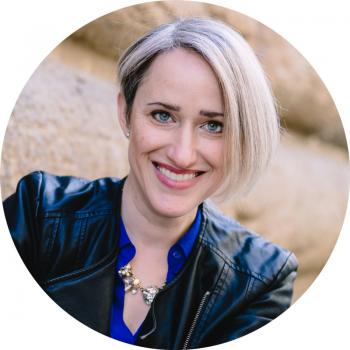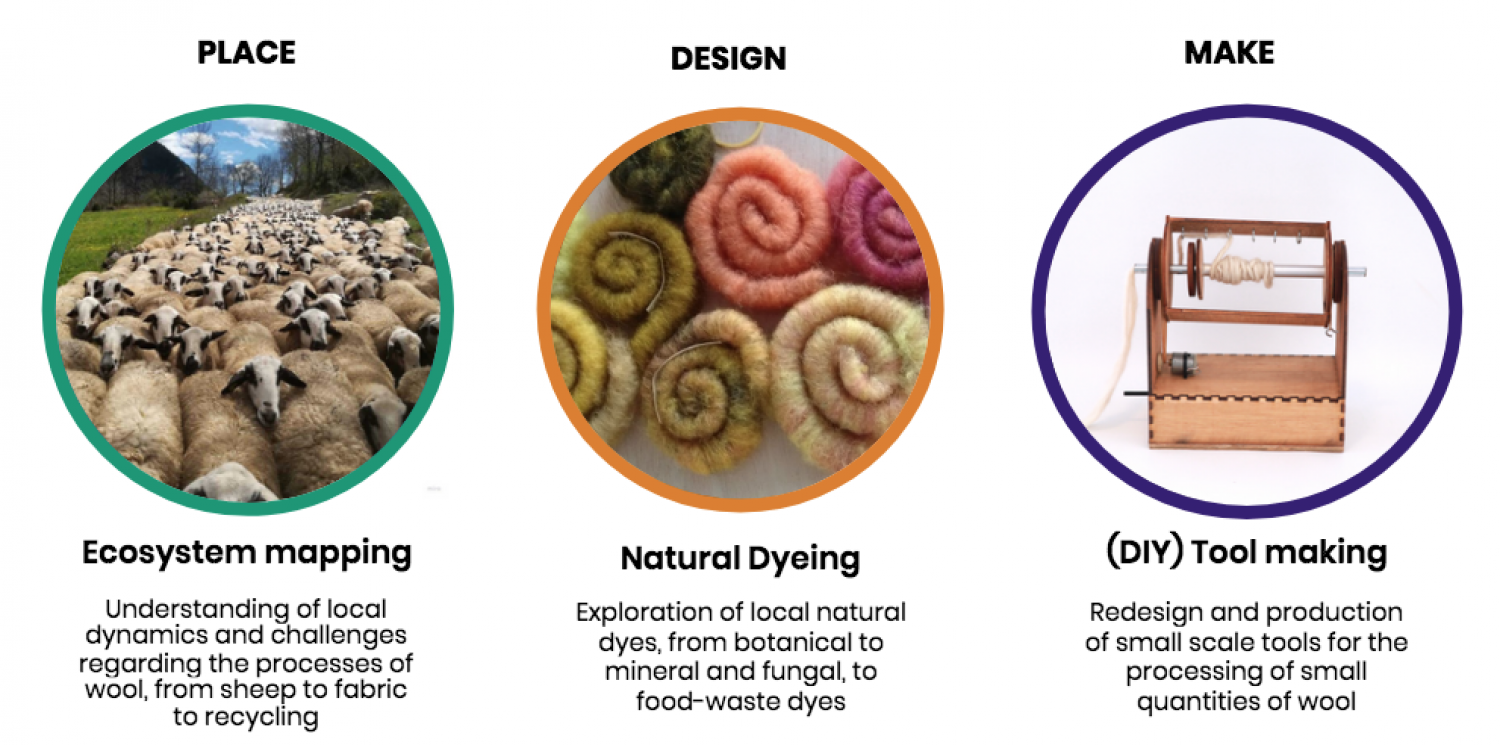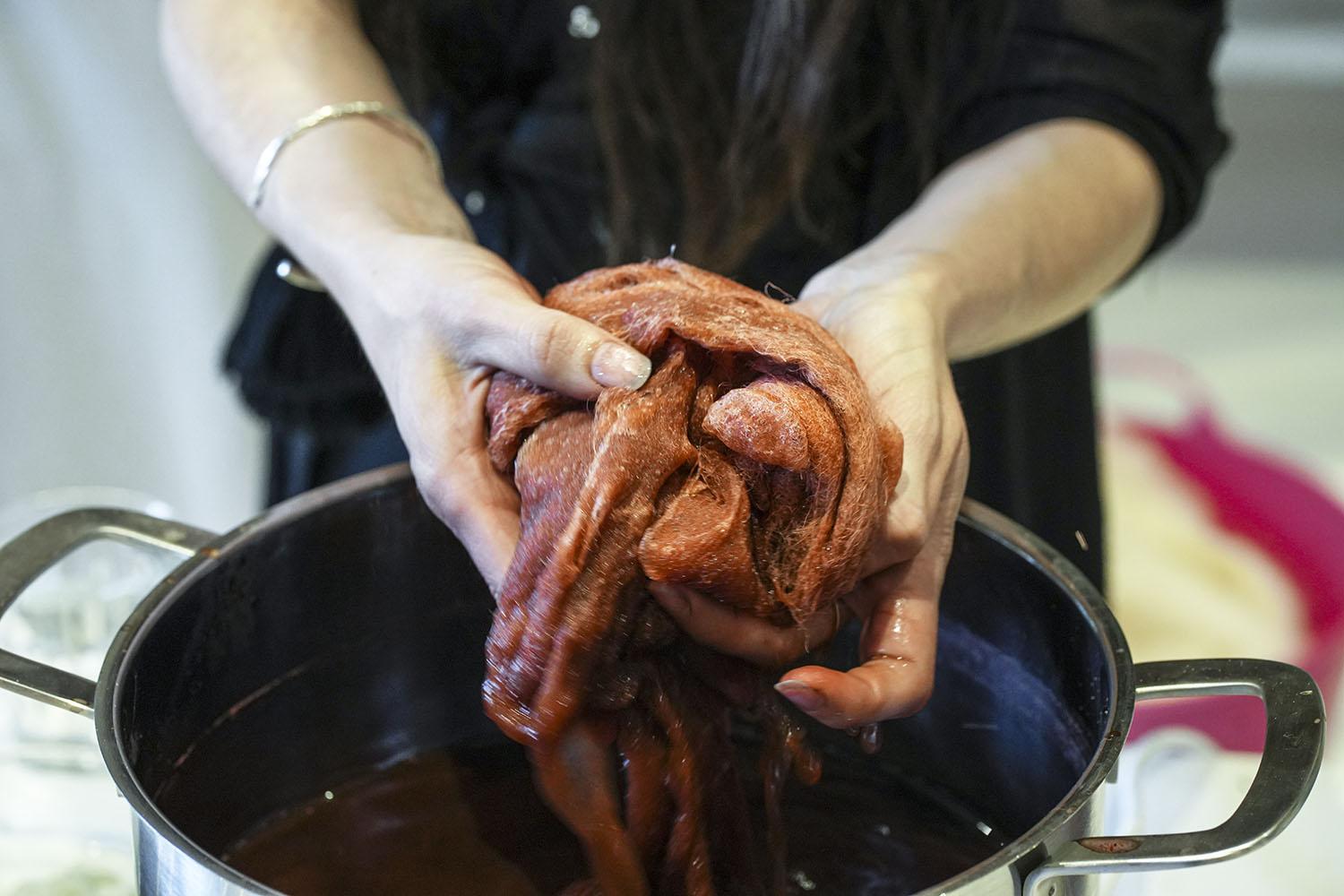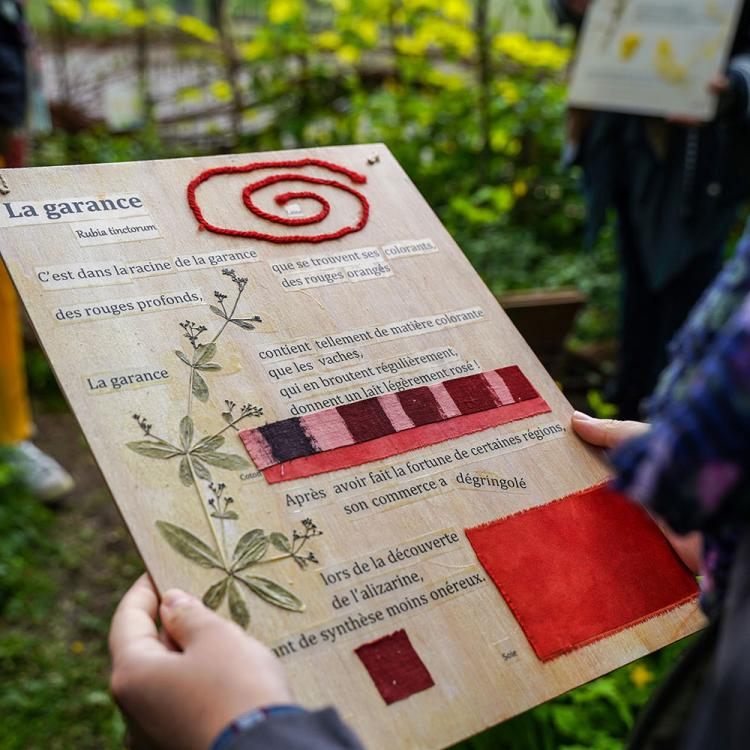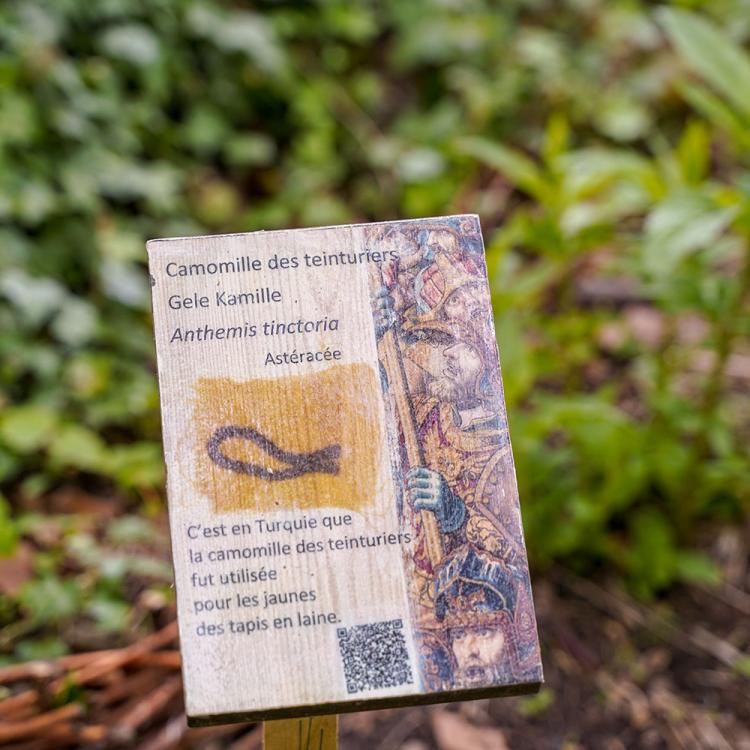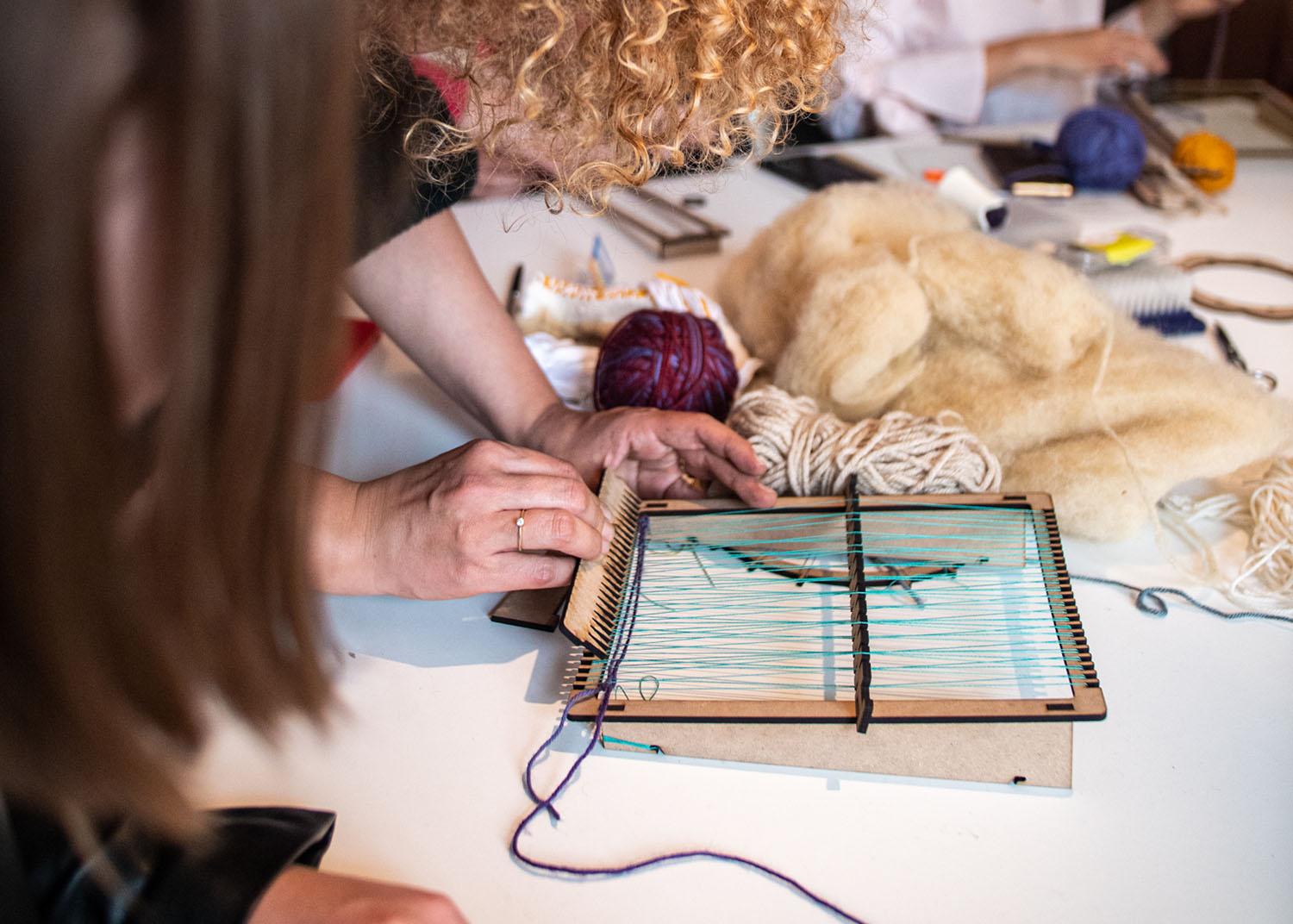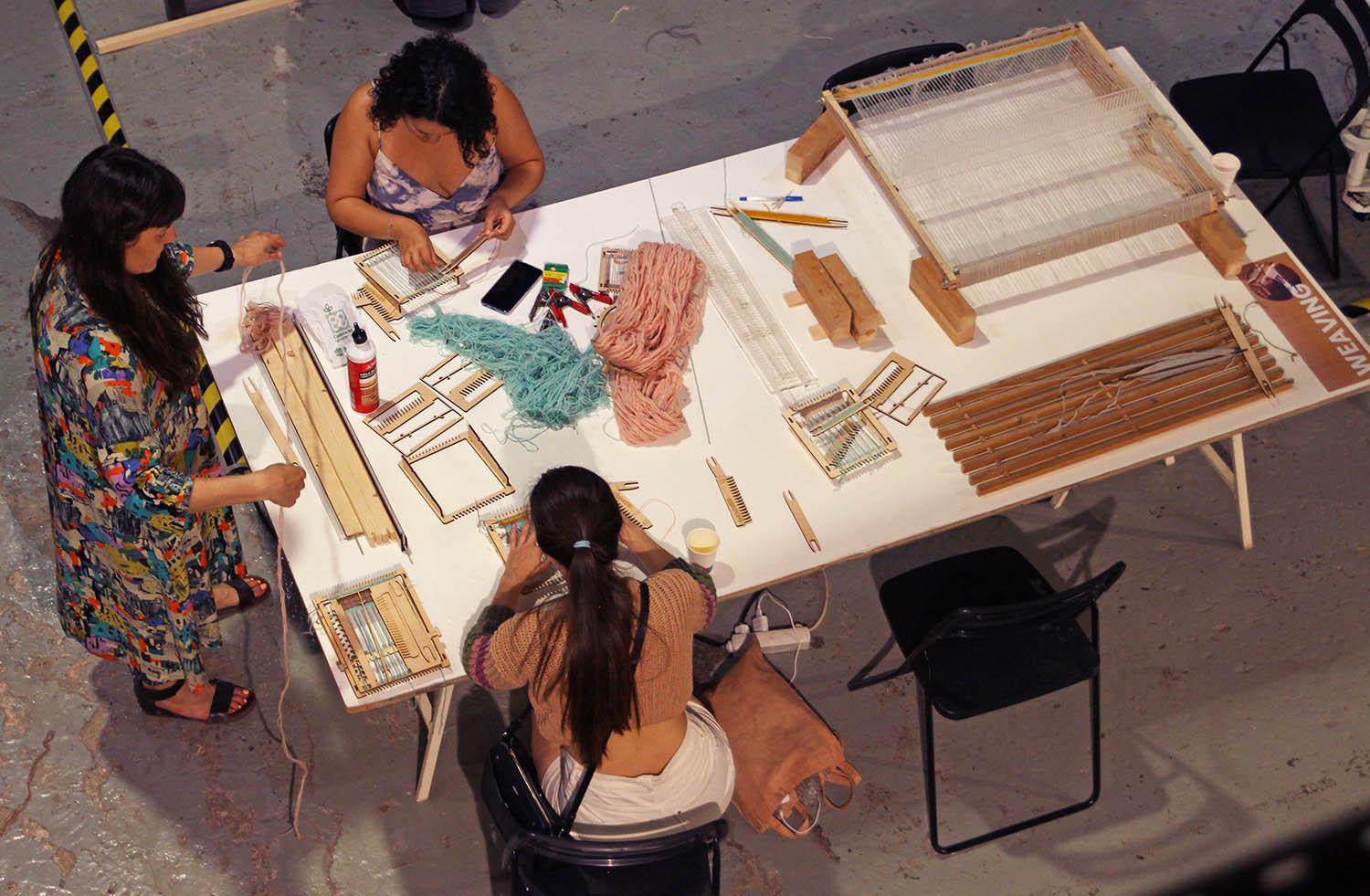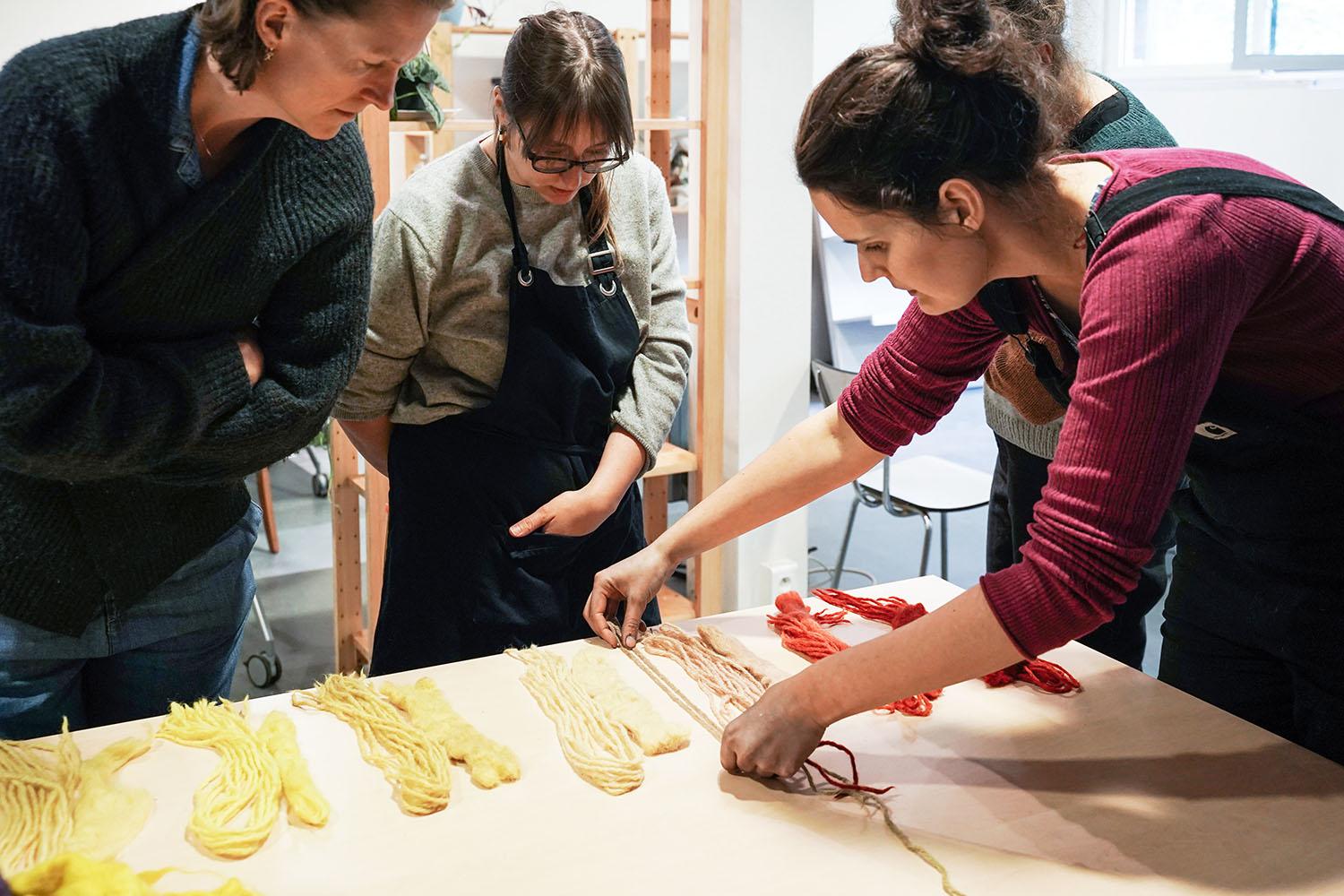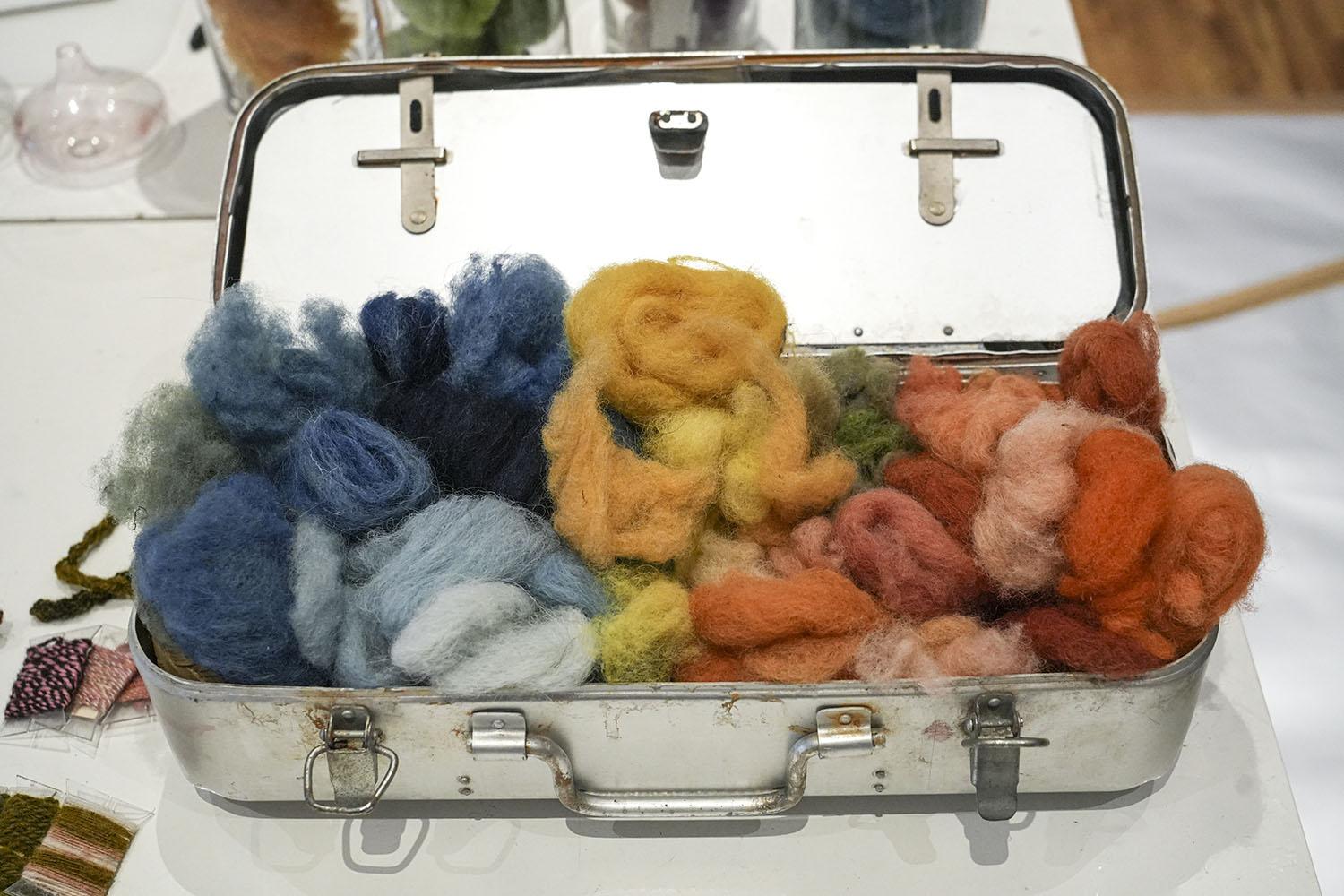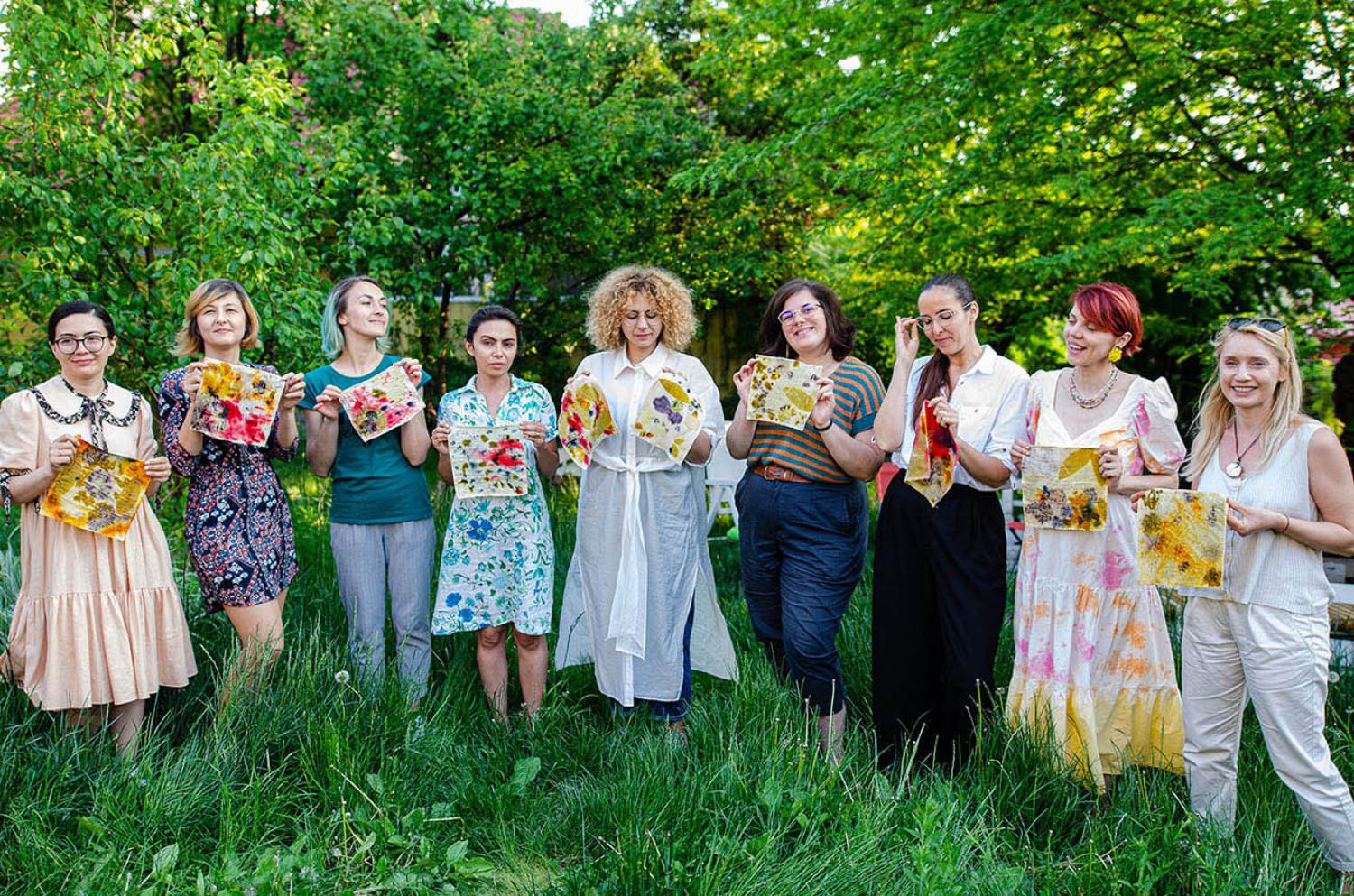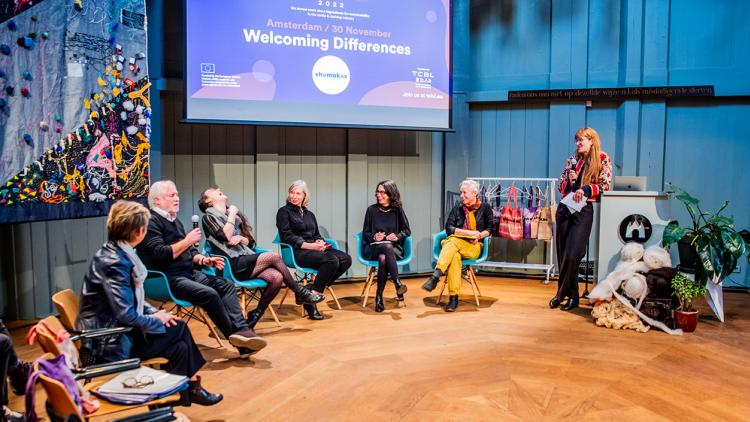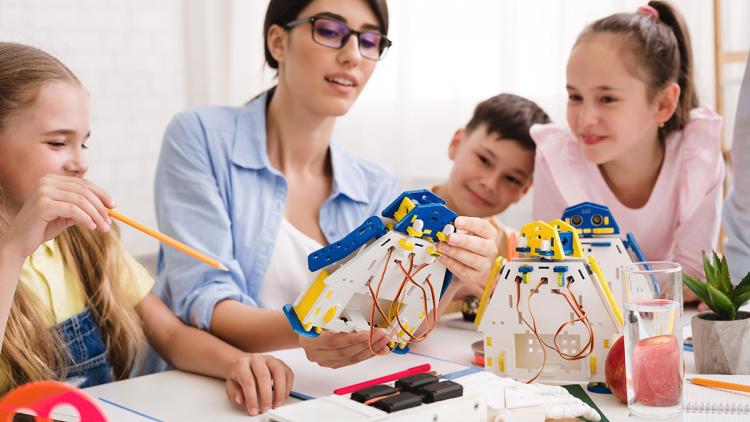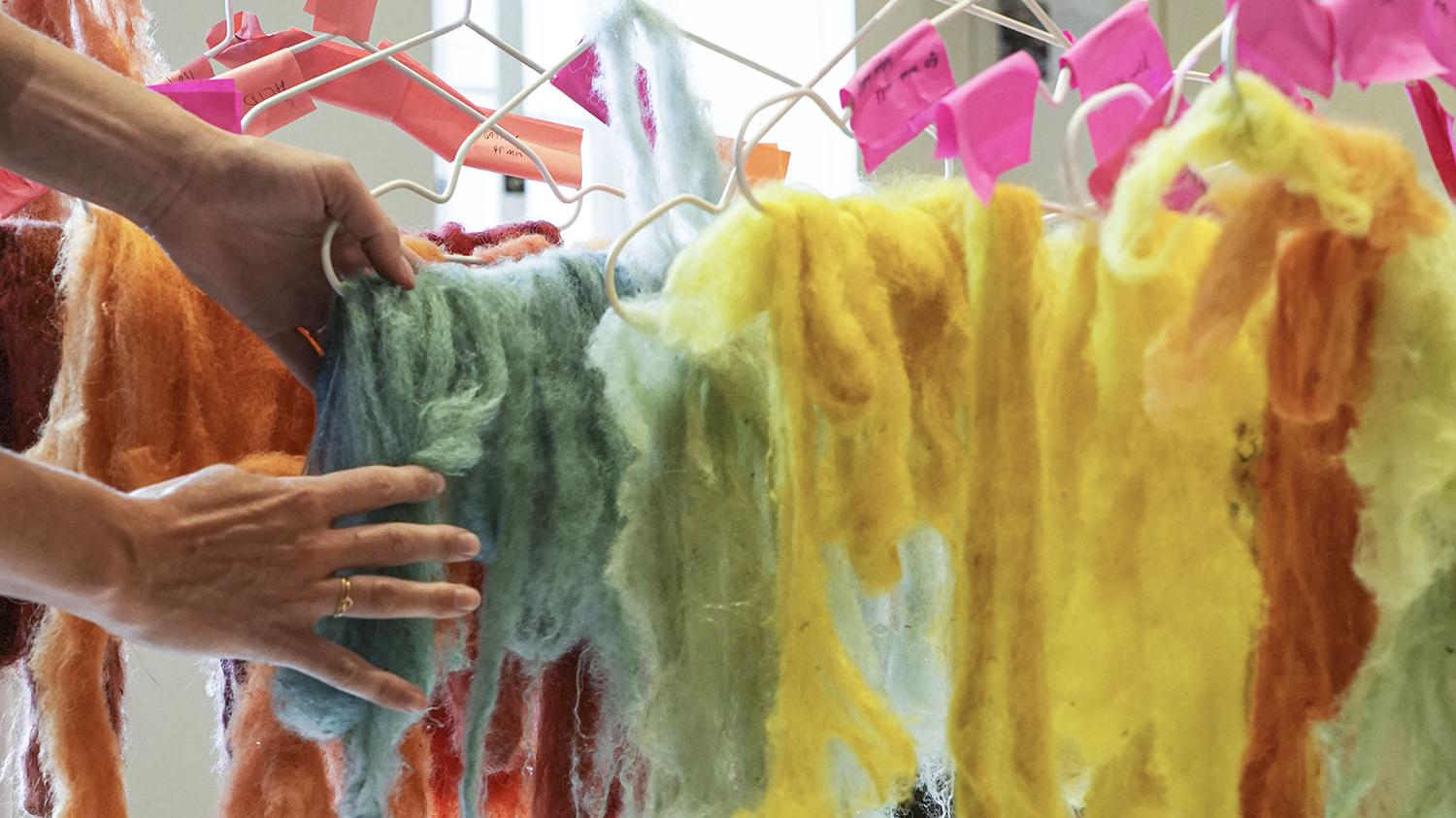
This past May, shemakes organised a series of events called Wool Mondays that were received with great interest by stakeholders, local labs and the online shemakes community. Here, we’d like to reflect on what has been - and can be - achieved by this kind of collaborative work.
Wool is a research area for what we at shemakes call lab-to-lab research; collaborative and pan-geographical activities with multiple outcomes as answers to common goals. The textile labs become places to revive craft guilds, to create local fibre-sheds and establish fibre value-chains. It is where we rethink material ecologies, familiarise ourselves with all the steps of the value-chain, and take courses on fibre transformation and machines in order to contribute actively to a community that may develop into structured local production of wool and collaborations with emerging companies.
The dates of our events were roughly divided amongst the three lenses that shape our collective explorations: place, design, make. Labs investigate their local ecosystems (place), experience original practices around sustainable natural dyeing processes (design) and develop open-source tool-making to create what we call Little Wool Factories (make). Below, we briefly summarise the activities, while of course the full recording of the hybrid online parts of the workshops are available on our YouTube channel.
A first session was dedicated to exploring and mapping the wool ecosystems present in Europe. Each participating lab conducted research on its local wool characteristics, sheep breeds, key actors and current initiatives that shed light onto the life cycle of wool, from breeding to recycling. Findings were shared during the first Wool Mondays session.
We heard stories from the shepherd and designer Sanne Muiser from the Netherlands (see above photo), discovered traditional sheep sorting practices from Iceland, looked into experimental wool biomaterials from Petra Garajova from Fabricademy at IaaC Fab Lab Barcelona and entered into the reality of recovering and spinning wool at the smallest scale, from FarmLab of Southern Austria. We learned about wool and textile art from designers Alexandra Florea and Oana Tudose, and explored research projects developed in the UK and Italy.
Labs have been mapping their local wool ecosystem on an interactive map that we hope will serve to incentivise the activation of wool ecosystems and help young designers, labs, farms and others to create new value chains.
The natural colour of wool depends on the type of sheep, and ranges from white, to cream, to browns, greys and beautiful warm blacks. An infinite range of colours can be obtained when bringing together these naturally coloured wools with dyes created from plants. Promoting a local development of natural dyeing options suggests sustainable alternatives to chemical dyes, incorporates a scientific element by exploring the chemically identifiable biochromes hidden in the plants, or looking at plant matter at all different stages, and creates a bridge from heritage and tradition to the modern day.
Bringing the colouring of wool into the lab-to-lab format develops an archive of knowledge and captures experiments around wool and natural dyes: through a number of different techniques we expand and further develop the Fabricademy content of Biochromes week to create a repository of colour and pattern charts that can grow with its community of practitioners.
Seeing how colours change based on season and location was one of the things we observed; holding Wool Mondays in early spring forced an unusual kind of innovation at Farm Lab in Easter Austria. Flowers and leaves weren’t mature yet as it was still cold, so the lab figured out how to dye wool with the many types of bark that are available year-round. On the other hand, in Romania, spring flowers were used directly to lend their forms to make original printed fabrics.
The shemakes network came up with the idea of co-creating what we have called “Little Wool Factories” as a research playground for reviving wool practices, connecting with local actors and cultures, and where a bunch of open source tools and recipes are accessible to facilitate wool processing at small-scale. Participating labs started by gathering documented open-source tools and machines and developing their own versions from carding to drop spindles, spinning machines and looms.
The name, with the adjective “little”, gives the idea of something that is naive and quaint, but the concept involves deep aspirations for envisioning other pathways of producing and consuming by enabling local small scale manufacturing by reconnecting with traditional processes and with the people, animals and nature that are present in the entire wool life-cycle.
These microfactories would be equipped with open-source tools for every phase of the wool cycle, from carding to drop spindles, spinning machines and looms. In the Shemakes open toolkit, a matrix of tools with open source files has been shaped and will be updated with current results.
Beyond the three “official” hybrid events, labs took the initiative to further engage with local stakeholders and bring awareness into the current state of the wool industry through events with different formats.
An important step for the group was the connection with the EWE foundation and the presentation of our research in the context of the 2nd European Wool Day which anticipated our Wool Mondays date-wise (it was on April 9th, 2022). Themes discussed include the role of wool in health, well-being and social Cohesion, education, research, fashion and art. For us, highlights were learning about the power of therapeutic knitting, the research behind the Adrion Interreg project WOOL and the program of an engaging local summer school on wool making in Italy.
In Brussels, Green Fabric organised an intensive weekend event called Rethinking Wool with the aim to rethink how to produce local wool in a society of overproduction and overconsumption. They offered a series of conferences and workshops on many parts of the process, including natural dyeing, spinning, knitting and weaving.
In London, the Centre for Circular Design, in collaboration with World Circular Textiles Day 2050, organised the online Circular Wool UK event inviting people from across industry, academia and the public sector to try to understand what role design research can play within creating a circular wool industry. A polyphony of distinguished speakers, tackling different aspects of the wool cycle presented their findings.
Finally, the team of Centre for Circular Design and IaaC Fab Lab Barcelona attended the Design Research Society Conference held in Bilbao in June 2022 and co-hosted a co-creation workshop entitled “Designing the Circular Design Team” where participants worked on the case of the Latxa Wool, discovering current initiatives like the Bask Biodesign Centre, the Lanaland project, the Ternua - Artishell and Mutur Beltz brands, defining local challenges and teams to further discuss the roles and synergies with other actors.
The lab to lab research projects of shemakes came about as a way of creating a common thread through which to open discussions and activate ecosystems on this topic. Participating designers, researchers and makers demonstrated that there is great potential in the wool industry - with craft, technology and interdisciplinary collaboration as key themes throughout. We’d like to share four reflections at this time.
Get close to the farm: Start learning more about our heritage by identifying native and cross breeds and getting close to the realities of a farm. Farmlab in upper Styria, Austria, is a great example of a lab that aims at localising the supply chain and building resilient rural economies. They piloted a case study that asks what is the cost and resources needed to produce yarn for personal needs vs. mass production? Is it sustainable?
New stuff: We listened to the presentations researchers who shared some of the latest innovations in the field, ranging from intricate technologies needed to make woven and felted fabrics and technologically-driven laboratory testing and textiles engineering, to experimental keratin extraction from wool waste using custom do-it-yourself centrifuge machines developed in Fabricademy. How can we further encourage entrepreneurship and innovation in the wool industry and promote knowledge of this progress?
Old stuff: Injecting crafts and ancient knowledge can serve as a fertile ground for opportunities and innovation within labs that promote making, tinkering and microproducing, shifting our culture from consumerism to prosumerism. Thus, we need to ensure that traditional crafts are not lost but promoted, and given a new lease on life through new innovative contexts.
Therapy wool: What we learned from listening to the testimonies of participants and from the European Wool Day is that wool has been used for decades as a communal, human resource that can have healing benefits for overcoming traumas or reintegration into society. The initiative “Wool for Ukraine” is a good example of this. How can we work together to extend the healing properties of working with wool?
300 people participated in Wool Mondays, combining in-person attendance in seven shemakes labs and online attendance from all over the world. Feedback from the participants, who were over 95% women and the majority of whom were aged 25-54, has been overwhelmingly positive. One participant indicated that she particularly enjoyed the way that “the scientific attitude combined with creative experimentation.” The repository of open source tools and DIY machines made on Day 3 was much appreciated. Even though our contents ranged from desktop research to hands-on making, what we grasped from the online attendees was the urge to be present, to make together, to experiment in the lab in order to be further engaged and fully immersed into the experience.
The multiple formats, ranging from an intensive weekend in Brussels to diffused events throughout the month to a morning’s academic conference allowed us to evaluate how different formats can work for different labs and their publics, and conclude that there is no one solution that is better than all the others. While Wool Mondays is over for now, the shemakes team is still working behind the scenes on the documentation of tools and experiments, and reflecting on what gaps need to be filled in order to get closer to our goals of creating local, full-circle wool ecosystems.
Labs involved in Lab to Lab Research on wool
IAAC, WAAG, Farmlab, REDU, Icelandic Textile Center, CCD, Green Fabric, Onlfait, Fab Lab Leon, Lottozero, Decode Lab, Viva Lab, and shemakes ambassador Petra Garajova.
Thank you’s
A big thank you to the EWE foundation for presenting their current activities and the results of the European Wool Day during our first wool monday event! Particular thanks to Elena Stanciu for being so actively involved in Wool Mondays activities and to all the participants for sharing their stories and interests.
Authorship
This article is a collaborative effort amongst Alexandra Korey, Anastasia Pistofidou and Marion Real, with contributions extracted from project reporting.
Further watching
The full recordings of the three Wool Mondays events are available on our YouTube channel, as well as extracts containing some of the material produced by the labs. You can find all the videos on the Wool Mondays Playlist.

